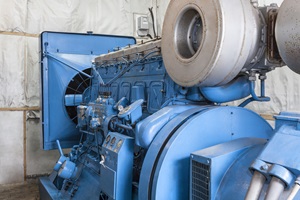- Off-Grid Power
- Nanogrids
- Energy Technologies
- Energy Technologies
Arctic Circle Is Hot Spot for Renewables Innovation

As was reported in a previous blog, one could make the argument that Alaska, sitting within the Arctic Circle, is a global leader on remote microgrids, with almost 140 such systems representing over 900 MW of capacity identified in the most recent version of Guidehouse Insights’ Microgrid Deployment Tracker. The vast majority of these remote microgrids incorporate some level of renewable energy. In fact, Kodiak Island reached nearly 100% renewable energy generation during 2014. Several local utilities have set goals ranging from 70%-80% renewable penetration within the next 5-7 years.
It turns out innovation on renewables and remote microgrids is not limited to Alaska. The Alaska Center for Energy and Power (ACEP) is co-leading a new program to be launched this summer for countries whose borders venture into the Arctic Circle. Dubbed the Arctic Remote Energy Network Academy (ARENA) program, this program is a formal project under the U.S. Chairmanship of the Arctic Council, with four of the eight council countries co-leading so far, including Canada, Finland, and Iceland, along with the United States (Alaska). This program is designed to bring together practitioners from throughout the Arctic to learn from one another with the goal of increasing the number of hybrid-renewable energy systems installed across the region. “ARENA is focused on the Arctic now, but we are hoping to expand it to other regions in the future, if we are able to find some partners,” said Gwen Holdmann, ACEP director.
Forefront of Climate Change
As a region, the eight countries representing the circumpolar Arctic are at the forefront of climate change, as measured and expected temperature increases are significantly higher than the national average. Impacts like diminishing sea ice and coastal erosion are becoming common challenges for these frigid and remote communities. However, the Arctic region is also leading the way when it comes to renewable energy development. ACEP estimates that 60% of grid-connected communities across the Arctic produce power from renewable resources (compared to a global average of 22%), including:
- Finland (39%, biomass)
- Sweden (48%, hydropower, biomass)
- Norway (99%, hydropower)
- Iceland (100%, geothermal, hydropower)
However, approximately half of the populations residing within the Arctic are not connected to a traditional power grid. Instead, they rely on remote microgrids to provide electric power services. This increases the complexity of integrating renewables, particularly at high penetration levels. These systems are among the most sophisticated engineering marvels in the world, providing energy services that are often a matter of life and death.
Countries throughout the Arctic are actively investing in renewable resource development. Perhaps the most fascinating data points come from Russia, a country not often linked with a focus on sustainability. The project pipeline in the country totals over 800 MW of remote microgrid capacity designed to displace pure diesel capacity with some renewables. Last year, a modest 15 MW of wind and solar capacity was brought online by RAO Energy Systems of the East, the state-owned utility that serves parts of Russia within the Arctic Circle. Those numbers are expected to scale up dramatically in the near future, with some 178 distinct projects in the works. At present, Russia also has the largest solar PV array located within the Arctic, a 1 MW system at Bagaday.